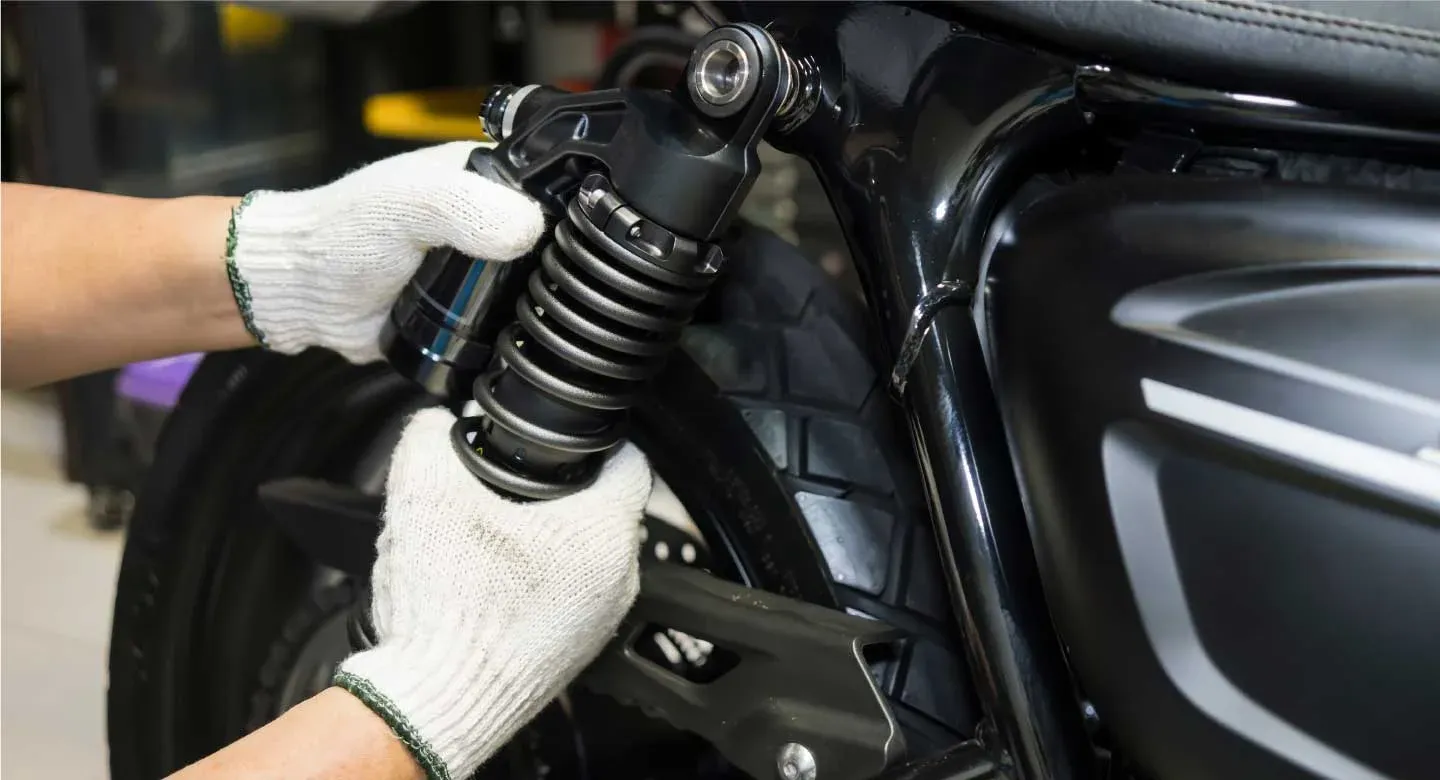Discover the 7 warning signs indicating suspension problems in your bike. Learn what to watch for and when to seek repairs.
7 warning signs of suspension problems in a bike
Addressing the suspension problem in a bike is crucial to ensuring a smooth and safe ride. Suspension issues can lead to increased wear on other components, poor handling, and a higher risk of accidents. Identifying the warning signs and addressing suspension problems in a bike early can prevent further damage and extend the lifespan of the suspension system.
Seven warning signs of suspension problems in a bike
Here are seven warning signs to look out for:
Fluid leakage
Visible fluid leaks around the suspension forks or shock absorbers suggest that seals are worn out or damaged. This can lead to poor suspension performance.
For example, if you notice a puddle of oil underneath the suspension forks after parking your bike, it is a sign that the seals are leaking. This can lead to poor performance and hence needs immediate attention.
Excessive bouncing
If your bike’s suspension bottoms out or compresses fully too easily or bounces excessively after hitting a bump, it indicates worn-out shocks or springs.
For example, if your bike continues to bounce several times before stabilising while riding over a speed bump or if the suspension makes a hard "thud" sound, it indicates that the shock absorbers or springs are likely worn out and need replacement.
Unusual noises
Unusual noises, such as knocking, clunking, or squeaking, while riding over rough terrain can indicate worn-out bushings, loose components, or issues with the internal suspension system.
For example, if you hear a consistent clunking noise from the front or rear suspension when riding on an uneven road, it needs immediate attention. This could be due to worn-out bushings, loose bolts, or internal damage to the suspension components.
Handling issues
If you feel it is difficult to control your bike, wobbly or unstable, this can be a sign of suspension problems affecting its balance and stability.
For example, if your bike feels unsteady or wobbly when braking or taking a corner, the instability often points to suspension problems. These can include problems like improper suspension setup or failing shock absorbers.
Unusual tyre wear
Suspension issues can cause uneven or unusual tyre wear patterns. If one tyre wears out faster or differently than the others, it could be due to suspension misalignment or imbalance.
For example, if you observe that the front tyre has significant wear on one side while the other appears almost new during a routine check, it indicates a problem with the suspension. This uneven tyre wear can be due to a misaligned suspension system, causing an imbalance in handling and ride quality.
Visible damage
Visible damages such as cracks, dents, or rust to the system's suspension components can severely impact its functionality.
For example, if you find rust on the suspension springs or a crack in one of the forks while inspecting your bike, it indicates visible damage to the suspension system. Physical damage like this can severely compromise its performance and safety.
Unresponsive suspension
A suspension that feels harsh, stiff, or unresponsive to changes in terrain could indicate that the components are not properly adjusted or seized or that the damping fluid needs replacement.
For example, if you experience a crash ride and notice that your bike feels very rigid, it indicates that suspension does not absorb bumps effectively. This can occur if the suspension components are not adjusted properly or the damping fluid has degraded and needs replacement.
Secure your ride with the right bike insurance
While routine maintenance can help catch suspension issues early, it’s equally important to stay protected on the road with a valid bike insurance policy. Unexpected repairs, accidents, or damage from poor suspension can lead to high costs—but a comprehensive two-wheeler insurance plan can ease that burden. You can even buy bike insurance online in just a few steps and ride with added peace of mind.
Conclusion
To conclude, regular maintenance and timely repairs are essential for preventing minor issues from escalating into major safety concerns. Comprehensive two-wheeler insurance is also important to ensure a safe and comfortable ride.

Get Quick Quote


